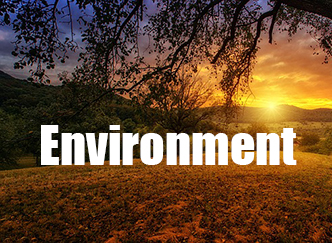By Winona LaDuke
It’s an amazing competition to be the last Tar Sands Pipeline. Enbridge wants to win. It already did. The last tar sands pipeline was Enbridge’s Alberta Clipper, completed across Leech Lake, Red Lake and Fond du Lac in northern Minnesota in 2015. On January 21, newly elected President Biden cancelled the besieged KXL pipeline. The pipeline cannot meet a climate test – in other words, you can’t shove 800,000 barrels a day of tars sands oil through a pipe, burn it, and save the planet. Nor can Line 3. Walz has committed to a 2030 100% renewable electricity goal, but approved Line 3 – the equivalent of 50 new coal fired power plants in 2020. Well, that’s ridiculous.
In the meantime, Enbridge is barreling ahead. Unloading more workers in the north country. It’s a frenzy of wiindigo action in Hubbard, Clearwater, Cass, Wadena, Aitken and Carleton Counties. There have been fifty arrests, thousands of people gathering, and hundreds closing down company worksites in remote areas of Aitken, Hubbard and Cass Counties, not to mention the shut down at Fond Du Lac worksites in late January.
The numbers are rising. The fact is that Enbridge has the police, the money and the pipes, but we have the people – tens of thousands of water protectors, and they are showing up across the north and in major rallies throughout the state. With the cancellation of Keystone, the world is looking at the single largest tar sands pipeline proposal in the world, and opposition is mounting. After all, being the Last Tars Sands Pipeline doesn’t get you a tiara from Mother Earth.
What’s the Rush?
Pipelines are being cancelled, and the fairy dust is wearing off. On March 23, Enbridge will face the Ojibwe, the state and citizens groups in Minnesota Court of Appeals. That will likely overturn the permits for Line 3. Donald Trump is gone and Biden is in. That’s a whole other problem for Enbridge. The Courts are not in favor of pipeline projects, and Enbridge wants this pipeline operational before the court shuts them down. In 2020, two more pipelines were cancelled, the Atlantic Coast Pipeline and the Constitution Pipeline. Poof, three gone.
On March 23, the White Earth and Red Lake Nations, along with the Minnesota Department of Commerce, Honor the Earth and the Sierra Club, will seek to overturn the route and certificate of need the Minnesota Public Utilities Commision (PUC) had approved. The basis: l) no spill analysis for Lake Superior, 2) no climate change impact analysis, 3) no meaningful Anishinaabe impact assessment or treaty rights consideration, and 4) no plan B, like no pipe. The environmental impact statement is surely lacking. The Trump administration did not even do an Environmental Impact Statement for Line 3, relying on the faulty one by the Minnesota Department of Commerce. The legal holes are pretty big. Additionally, there’s a federal court appeal, filed by Earth Justice, the same law firm which filed the DAPL and Keystone cases. We have a good shot in court.
What Enbridge hopes is that, like the Dakota Access Pipeline court case, the company will already be pushing oil through the pipe and they won’t have to stop. That’s why they are rushing. That’s why we are facing policemen and DNR officials.
Being hasty means you make mistakes. Take for instance, the cultural resource assessment on this pipe. That was completed by Fond du Lac, under contract, and rushed. There is no cultural resource monitor out ahead of this pipe, as the permit requires. Instead, Tania Aubid and I found a stake in the middle of our waaginoogan, our lodge, as it sat on the banks of the Mississippi. While we asked for the cultural monitor, none appeared, and no one from Fond du Lac or Enbridge has ever spoken to the two Midewiwin women who built that lodge.
The Tribal Historic Preservation officer from White Earth, Jaime Arsenault was told she would be arrested if she came to the site, and in her report she expressed outrage at the lack of transparency, consultation, and the destruction of cultural properties. There are many more cultural sites, both from the ancients and the present peoples, near the Mississippi River, Willow River and Savannah Portage – all of those places were recorded hundreds of years ago on Midewiwin scrolls.
Being hasty means that people get killed, like Jorge Villenueva who was crushed by a forklift at the Hill City construction site. Being hasty means you start throwing in pipe as fast as you can, although that pipe may be corroding. At least, that’s what we saw on the Willow River, and we see in pipe yards all through out the north country.
Put it this way, most of the pipes which Enbridge is putting in the ground have been sitting out in pipe yards for five years, getting turned over and repainted with a special anti-corrosive. Cross our fingers. After all, the Keystone XL, a brand new pipeline, spilled 383,000 gallons of oil into Lakota territory because of anomalies and welds. New pipe is not as good as No pipe.
High Directional Drill
Enbridge wants to cross the rivers 69 or so times in northern Minnesota. That means dirty oil will move far. The Mississippi gets crossed two times, the Red River, Little Red River, Clearwater, Crow Wing Rivers get crossed – they feed all the lakes. The Shell River gets crossed four times. Remember that the Kalamazoo River Spill lasted for l7 hours before the company noticed it. And that was not a remote river, like the Willow.
Rhetorical question: Who are you going to bet on, the pipe or the river? That’s some tricky stuff as we watch rivers meander, and in places like Bad River, where the Mashkiziibii has eroded the soil all around the pipe leaving it exposed. That’s a problem, and that’s what happened at the Yellowstone River in Montana.
This is tricky stuff. It turns out that you can’t do a river crossing with the High Directional Drill, or HDD, with ice on the river. That means, no drill till spring. Enbridge wants to cross the rivers now. By December 11, the company had applied for permit waivers to cross the Red River, the Clearwater,. Red Lake River, and Middle River, despite the permit restrictions.
Correspondence from the Minnesota Pollution Control Agency’s (MPCA) Helen Waquiu found: “the 401 Cert stipulates that Enbridge must not conduct HDD stream crossing construction activities at streams covered with ice, unless that activity has been pre-approved by both MPCA and MDNR [MN Dept of Natural Resources]. To date, we have not approved any such crossings. Enbridge did submit a request to both MPCA and MDNR, asking us to allow it at certain ice-covered streams; however, following that request, MPCA and MDNR told the company that we did not envision approving any such activities. That’s the current status.” she wrote in an email on January 28.
Enbridge’s Bobby Hahn wrote an optimistic note to the MPCA’s Melissa Kuskie and all, on December 30: “Enbridge is ready to discuss and can have our experts available …Based on current Project schedule and considering the necessary upfront time to prepare and finalize HDD plans, Enbridge is hopeful to understand if these crossing will be approved by 1/15. Enbridge is also finalizing another the second request package and we expect to submit soon. This second requests will request a response by 2/1 to be able to align schedule in consideration of the Project restriction periods….”
Thus far, it appears that the MPCA will not grant these permits, as Melissa Kuskie responded to Enbridge’s Bobby Hahn: “At this time, we are unable to authorize HDD during winter conditions, due to concerns regarding the ability to promptly and effectively respond to any potential inadvertent release during winter conditions….”
Fingers crossed.
Poverty and Pipelines
If you say the lie enough times, is it true? Well, no. Line 3 was a bad idea seven years ago and it is a worse idea now. Enbridge, however, is busy blanketing media with advertisements portraying themselves as a family-friendly, Indigenous-loving company. They’ve really pulled out all stops, including indirectly providing advice to northern newspaper publishers, discouraging articles which might question the logic and practices of this pipeline.
The Aitken Age dropped its star reporter- Lynn Mizner, and assigned her to non Enbridge reporting. A similar “gag order” was rumored to be levied at the editor of the Pine River paper, and more. Enbridge seems to underwrite most of Minnesota Public Radio and TV programs in the north, with Julie Kelleher (formerly of MPR and now at the helm of Enbridge’s public relations machine.) They also created an organizaton, the Minnesotans for Line 3, which lavished over $11 million in advertising and lobbying in 2018.
In the meantime, there’s only so much lipstick you can put on a pig. Enbridge has targeted some fine northern communities, most of whom are the rural poor, to shove a pipeline through. Sort of like, “here’s a job, be happy, don’t mind the destruction.” In the end, it’s 23 jobs in pipeline maintenance.
The Art of Indian Whispering
Enbridge has been perfecting the fine art of Indian Whispering. It’s despicable. The Anishinaabe should not be paupers in our own land.
Fond du Lac tribal members had a special note on the tribal per capita payment which just went out, saying basically, “courtesy of Enbridge”. With a substantive settlement, Fond du Lac has exercised extreme influence over this project, including the accelerated and inadequate cultural resource assessment of the lands of the l855 and l863 treaty territories. That’s not even Fond du Lac’s territory. There’s some pretty valid concerns about Fond du Lac financially benefitting from this project, while other tribal members suffer. At the same time, Minnesota pushes ahead with lethal mining projects in their territory, forcing the tribe to try and defend at least one front – their St. Louis River watershed – from Polymet, Twin Metals and the like. This is wiindigo economics at its best.
Leech Lake doesn’t have to deal with Line 3 going through the middle of the reservation. After all, like Fond du Lac, they have six other Enbridge lines to worry about. What’s particularly ironic is that the 2010 easement procured by Enbridge from Leech Lake allotted $10 million to the tribe for a 50 year easement on the Alberta Clipper pipeline ( Enbridge’s last tar sands pipeline). Meanwhile, Al Monaco, the CEO of Enbridge, took home a sweet $18 million last year. That’s an annual gig, and colonial mathematics at its very best.
However, the company secured a Line 3 Pipe Blessing Ceremony, and boasted about it widely. Apparently, the ceremony was conducted by tribal member Diane Osceola, Enbridge’s latest Indian Whisperer. She’s not alone, there was a big ceremony in Canada, too. Blessing pipeline projects seems to be the latest vogue. Honestly, none of us want pipes to fail, we just don’t think that praying for Enbridge and dirty oil in our wild rice is the way to go.
Red Lake Stands Tall
Enbridge is betting on the crisis of this pandemic and the legacy of the Trump administration’s brutality to tribes, to pitch a good deal. The Red Lake Nation has not taken the bait, and we are grateful. Red Lake has a strong trespass case – 50 years or so of Enbridge on their land, as well as the l863 treaty territory, and a lot of water to be worried about.
Last October, Enbridge met with tribal officials and laid out promises of $500,000 for a rebuild of powwow grounds in Ponemah, $50,000 for daycare programs, $l00,000 for the radio station, community investment at $465,000 or so, according to the Confidential Settlement Negotiations memorandum which got leaked to tribal members. More than that, Enbridge would sign a power purchase agreement for l2 megawatts of solar power, to be owned by Red Lake Nation, along with Alette/Minnesota Power. All of that would power Enbridge’s Line 3.
In return, the Red Lake Nation would within five days, “withdraw from the Minnesota Court of Appeals case” (to overturn the environmental impact statement and the certificate of need) and publicly communicate their opposition to unlawful protesting, resistance or actions against Line 3 replacement in the l863 treaty territory. “All of that was parlayed, apparently by Eugene Bugger MacArthur, Enbridge’s apparent Indian Whisperer from White Earth.
The fact is we need a just transition without more Enbridge. Today on the banks of the Red River, a Red Lake Treaty Camp stands, overlooking the river crossing, which Enbridge is making a move on. Sam Strong, Secretary Treasurer of Red Lake Nation, is sitting in a lodge looking at Enbridge barreling towards the river. I’m going to bet on the river and the people, not the company.
Just Transition
What we need is a way out of this mess. Red Lake Nation should put up 12 megawatts of power without having to sign a deal with Enbridge. You should not have to sacrifice an ecosystem to have adequate drinking water, and tribal health care programs. The point is that the party’s over, and no one needs a tar sands pipeline, even if it’s powered by wind and solar. Fortunately, it seems that Enbridge has a lot of money, and could finance it without getting a seventh pipe. After all, Enbridge is the largest energy consumer in Minnesota, so it might be time for the company to help out. And, finally, the best jobs for the future are going to be in decommissioning old pipelines – there are hundreds of thousands of miles of old decrepit pipes endangering groundwater throughout the continent. Enbridge has a lot of them.
Our day in court is coming March 23. The Water Protector Movement is growing, and spring is coming. The last tar sands pipeline tiara goes to Enbridge for sure, it’s for the Alberta Clipper. Now we want pipes for people, not for oil companies, and we want a just transition.







